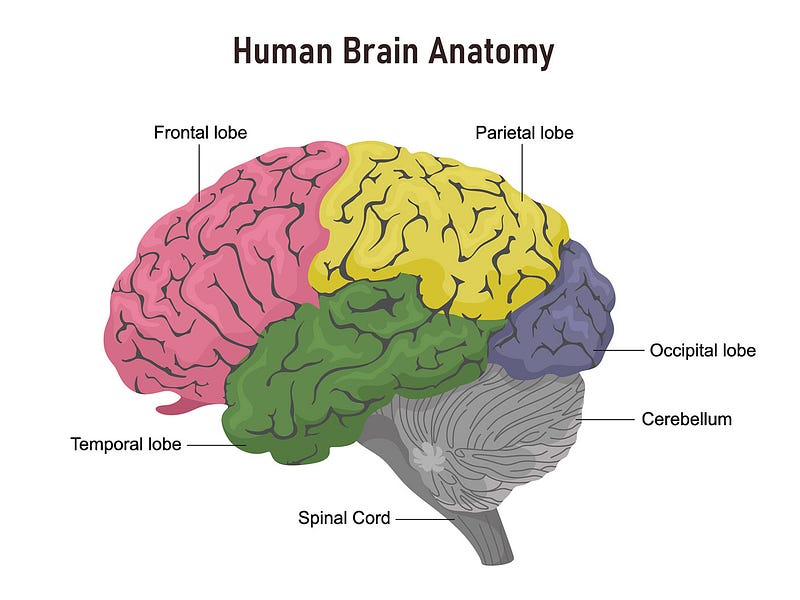Understanding Catatonia: How Can Someone Catch a Ball?
Written on
Chapter 1: The Enigma of Catatonia
Consider this scenario: your friend is in a catatonic state—she's unresponsive, silent, and seemingly uninterested in her surroundings. For days, she's been sitting in silence, not eating or engaging with anyone. Concerned for her well-being, you attempt to provoke a reaction by tossing a ball her way, gently. To your astonishment, she catches it but immediately returns to her state of disengagement. How could this happen? Is it even feasible?
For Reece Reid, this situation is not a mere hypothetical; it reflects his lived experience with a friend.
So, what accounts for this phenomenon?
While some of this discussion will delve into psychological aspects, I aim to focus primarily on the neuroscience involved. These two fields are interconnected, but I want to emphasize brain structure, function, and anatomy to elucidate this intriguing case. Importantly, it's entirely plausible for this to occur, and it does not diminish the severity of Reece's friend's catatonia. Different brain systems contribute to this behavior.
General Outline of This Article:
- Understanding Catatonia
- The Mechanics of Catching a Ball
- The Intersection of Catatonia and Ball-Catching
Section 1.1: Understanding Catatonia
Historically, catatonia was primarily recognized as a symptom of schizophrenia, specifically labeled as catatonic schizophrenia. However, current understanding acknowledges it as a symptom associated with various mental health conditions, including autism, depression, bipolar disorder, anxiety, traumatic brain injuries, Parkinson’s disease, and strokes.
Some individuals may have a genetic predisposition to catatonia, often observable in family members displaying similar behaviors. Typically, symptoms begin to surface between ages 15 and 30, although they can manifest earlier or later. Initial signs may be subtle, escalating to more pronounced symptoms within about two years.
While many aspects of catatonia remain enigmatic, here are some common symptoms:
- Immobility (97% prevalence)
- Mutism (97% prevalence)
- Withdrawal and refusal to eat (91% prevalence)
- Excessive staring (87% prevalence)
- Negativism (67% prevalence)
- Posturing (58% prevalence)
- Rigidity (54% prevalence)
- Waxy flexibility/Catalepsy (27% prevalence)
- Stereotypy (25% prevalence)
- Echolalia or Echopraxia (14% prevalence)
- Verbigeration (14% prevalence)
Typically, individuals exhibit at least three of these symptoms. Catatonia can be categorized into two main types: akinetic catatonia, characterized by immobility and withdrawal, and excited catatonia, which may involve more repetitive behaviors.
In severe cases, such as malignant catatonia, health complications may arise, including drastic changes in blood pressure, body temperature, and heart rate.

Section 1.2: Brain Regions Involved in Catatonia
Before progressing, it's essential to discuss which brain regions are typically over- or under-active during catatonic episodes:
- Frontal Lobe: Reduced blood flow leads to decreased activity, affecting decision-making, impulse control, and emotional regulation.
- Orbitofrontal Cortex: Less active during catatonia, impacting decision-making.
- Medial Prefrontal Cortex: Less active, affecting attention and memory.
- Lateral Orbitofrontal Cortex: May show increased activity related to non-reward-based actions.
- Temporal Lobe: Reduced activity can impair speech and language processing.
- Basal Ganglia: Less blood flow affects movement control and emotional responses.
- GABAergic System: Impaired functioning disrupts attention and muscle control.
- Neural Connectivity: Disruptions between the frontal lobe and motor areas hinder voluntary movement.
Given these factors, it's clear why purposeful movement is challenging for someone experiencing catatonia. The ability to move intentionally is compromised due to the combined effects on cognition, decision-making, reward processing, and muscle control.
Chapter 2: The Mechanics of Catching a Ball
The first video illustrates an intriguing competitive scenario, showcasing how reflexes and learned behaviors interact in a dynamic context.
So, how could a catatonic individual catch a ball?
Catching a ball can be categorized into two types of responses: reflexes and procedural memory. Reflex actions, like swatting at objects, involve a direct pathway from the spinal cord to the motor areas, requiring no conscious thought.
However, I suspect catching a ball is more akin to procedural memory, a skill honed through practice. This memory type allows us to perform tasks like playing an instrument or swinging a racket automatically, without conscious deliberation.
Key brain areas for catching a ball include:
- Fusiform Gyrus: Important for recognizing objects and faces.
- Lingual Gyrus: Aids in object recognition.
- Collateral Sulcus: Connects memory areas.
- Occipital Lobe: Processes visual information.
- Parieto-Occipital Sulcus: Integrates visual and spatial information.
- Primary Visual Cortex: Essential for understanding motion and depth.
These brain regions, particularly those at the back, play a crucial role in procedural memory. The cerebellum is also integral for coordinating movements and learning.
Section 2.1: Why Catching is Possible in Catatonia
If catching a ball is reflexive, it could occur even in a catatonic state, as catatonia primarily affects the connections to motor areas, not the spinal cord.
If it involves procedural memory, catching a ball remains feasible because catatonia impacts the frontal and lateral brain regions primarily. Procedures learned prior to the catatonic episode can still be accessed, allowing for the reflexive action of catching the ball.
In conclusion, while catatonia impairs many aspects of movement and thought, the brain can still access previously learned skills like catching a ball, illustrating the complexity of human behavior and neural function.
The second video captures an engaging challenge that emphasizes the intricate relationship between learned skills and instinctive responses.
I hope this exploration provides clarity and insight into this fascinating topic.
Until next time,
-Alex